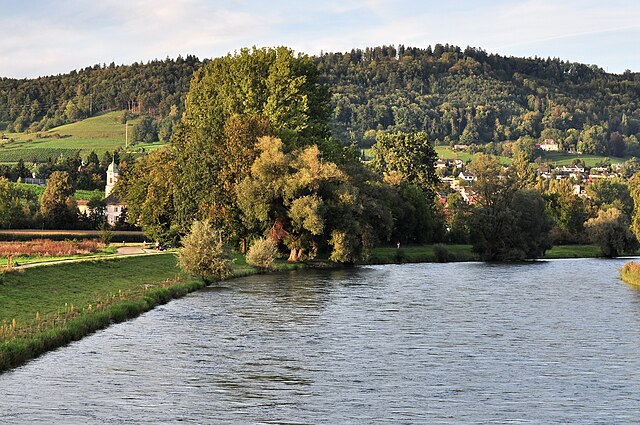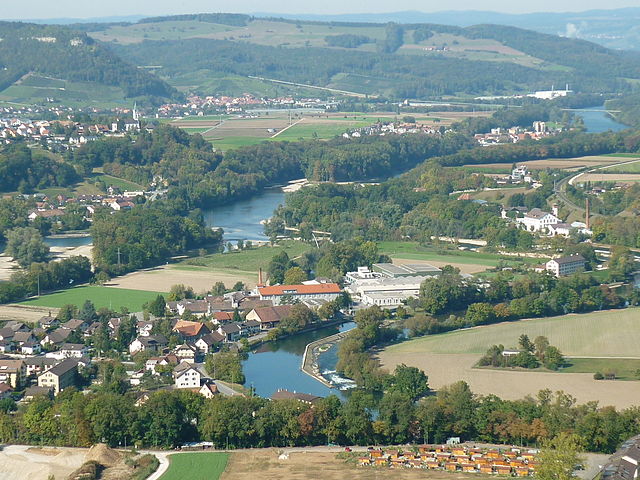Top Qs
Timeline
Chat
Perspective
Limmat
River in Switzerland From Wikipedia, the free encyclopedia
Remove ads
The Limmat is a river in Switzerland. The river commences at the outfall of Lake Zurich, in the southern part of the city of Zurich. From Zurich it flows in a northwesterly direction, continuing a further 35 km until it reaches the river Aare. The confluence is located north of the small town of Brugg and shortly after the mouth of the Reuss.






The main towns along the Limmat Valley downstream of Zurich are Dietikon, Wettingen, and Baden. Its main tributaries are the Linth, Wägitaler Aa and Jona, all via Lake Zurich, the Sihl in Zurich, and the Reppisch in Dietikon.
The hydronym is first attested in the 8th century, as Lindimacus. It is of Gaulish origin, from *lindo- "lake" (Welsh llyn) and *magos "plain" (Welsh maes), and was thus presumably in origin the name of the plain formed by the Linth.[1]
Remove ads
Power generation
Like many Swiss rivers, the Limmat is intensively used for production of hydroelectric power: along its course of 35 km (22 mi), its fall is used by no less than ten hydroelectric power stations. These include:
Remove ads
Navigation
Historically, the Limmat was an important navigation route. In the twelfth and thirteenth centuries, voyages from Zurich to Koblenz are recorded. In 1447, the Emperor Frederick III granted the privilege of free navigation on the Limmat and on the Rhine to Zurich. Because of the current, navigation was typically downstream only, with the barges being sold on arrival.[7]
Today, the Limmat is navigable for much of its length by small craft only, with many of the hydroelectric power plants incorporating boat lifts. The traditional boat type used on the river is the weidling, a flat-bottomed vessel that is usually 10 metres (33 ft) long.[8][9]
The uppermost stretch of the river through the centre of Zurich is navigable by rather larger vessels, albeit limited by low bridges. On this stretch of the river ZSG (Lake Zurich Navigation Company) operates its Limmat boat service, from the Landesmuseum to Lake Zurich, using low-profile motor boats.[10]
Remove ads
Towns near the river
Cultural heritage
Located on the swamp land between Limmat and Lake Zurich around Sechseläutenplatz on small islands and peninsulas in Zurich, prehistoric pile dwellings around Lake Zurich were set on piles to protect against occasional flooding by the Linth and Jona. Zürich–Enge Alpenquai is located on Lake Zurich lakeshore in Enge, a locality of the municipality of Zurich. It was neighbored by the settlements at Kleiner Hafner and Grosser Hafner on a then peninsula respectively island in the effluence of the Limmat, within an area of about 0.2 square kilometres (49.42 acres) in the city of Zurich. As well as being part of the 56 Swiss sites of the UNESCO World Heritage Site Prehistoric pile dwellings around the Alps, the settlement is also listed in the Swiss inventory of cultural property of national and regional significance as a Class object.[11][12][13]
Remove ads
See also
References
External links
Wikiwand - on
Seamless Wikipedia browsing. On steroids.
Remove ads


